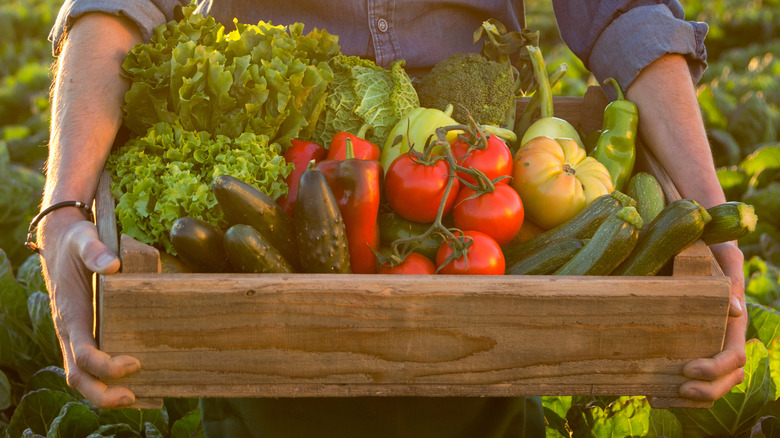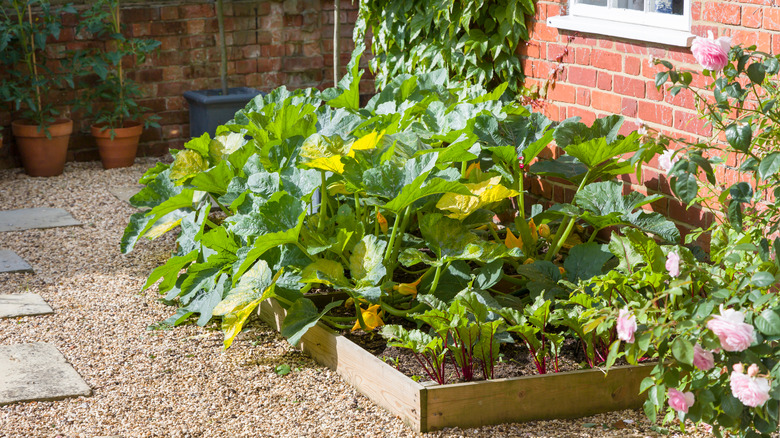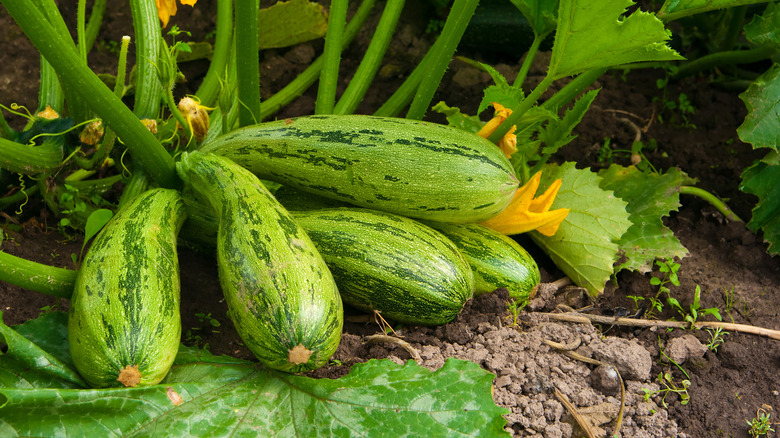The Easy-To-Grow Veggie Pinterest Recommends For Beginner Gardeners
As rewarding as growing your own vegetables can be, some crops are definitely more beginner-friendly than others. Luckily, there are plenty of veggies that are fun and easy to grow, even for novices. One of the best and most productive options for beginning gardeners is the popular Pinterest recommendation of summer squash, which is hardy in USDA zones 3 through 10.
Summer squash (Cucurbita pepo) includes summer favorites like zucchini, pattypan squash, and yellow squash, among others. This category of vegetables gets its name because, unlike winter squash which has a thick skin and can be stored for winter, summer squash should generally be eaten or frozen shortly after harvesting. While some varieties of summer squash form long vines and require trellises, most are bushlike and can be easily grown in smaller spaces. Different cultivars also have subtly-different flavors. Choosing the right variety for your space and taste will set you up for a successful growing season, so pay attention to each type's flavor descriptors and how much room they need to grow before choosing the right option for your backyard garden.
Summer squash is easy to plant and maintain
The best time of year to plant zucchini and other types of summer squash is after all danger of frost has passed for your region in the spring and once your soil temperature has reached at least 60 degrees Fahrenheit. Summer squash grows best when it's direct sowed instead of transplanted to avoid transplant shock. Further, many varieties reach maturity in under 55 days, making it perfect for areas with short growing seasons or gardeners who got a late start. The number of days to maturity is one of the key differences between growing summer squash and winter squash, as winter squash often requires over 100 days before harvesting. Be sure to place your plants in a full-sun area and bury seeds about half an inch deep in well-draining soil.
Summer squash requires regular watering to produce well and should ideally be watered by drip irrigation, as overhead watering can encourage powdery mildew and other diseases. The plants require at least an inch of water a week. Remember to mulch around your plants as well, both to limit weeds and to keep the soil from drying out too quickly. You may also want to fertilize lightly with a nitrogen fertilizer about once a month.
Harvesting and sharing your summer squash
Summer squash produces both male and female flowers on the same plant, so you will still get plenty of squash even with only one plant. While bees and other pollinators usually handle transferring the pollen from the male flowers to the female flowers, you can use a cotton swab to hand pollinate the squash in your garden as well. Remember to harvest the zucchini in your garden and other summer squash when they are still young and the skin is tender. For most varieties, this is when they are about 6 inches long.
Most varieties of summer squash are extremely-prolific, often producing far more than anticipated. For most home gardeners, one or two plants will provide all the squash they can use for the season. For example, just one zucchini plant can often produce up to 10 pounds of fruit. However, this can be a good problem to have, as zucchini and other summer squash types can be used in a variety of applications in the kitchen. They can be roasted, fried, eaten raw, or added to baked breads and cookies.


